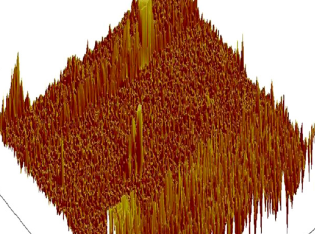Industrial process optimization HydroAcrylic ltd

Our client is one of Greece's leaders in sanitary ware manufacturing, with a factory in Halkidiki, Greece. Their products are exported in 10 countries in the EU, and they are currently expanding in markets outside EU. Our work was focused on optimizing their manufacturing procedures, minimize resources consumption and manufacturing flaws. We worked for more than four years with them, resulting to a minimization of energy costs [reduction by 35%] by incorporation of combined methodologies and optimum materials. Our cooperation included also process simulations and especially heat transfer investigations.
The organization was suffering from unstable product quality and often flaws in the manufacturing lines. Some of these flaws were due to the inconsistent properties of acrylic sheets used to produce the sanitary ware items, whereas the majority of the flaws occurred due to insufficiently controlled procedures and processes. The most sensitive process in such a manufacturing line is the heating and the molding of acrylic [or other material based] sheet that is the precursor of the sanitary ware product. These sheets are initially placed within and industrial oven and depending on their mechanical and thermal properties are heated for a period of time in the range of 45 to 100 sec at temperatures in the range 120-200 C. Although this sounds pretty simple, it is not. Imagine that a heating period variation of just 3-5 seconds or a temperature variation of 5C could lead to burning [yellowing, melting and destruction] of the acrylic sheet or to insufficient softening that would eventually lead to cracks when in the mold.
We initially investigated all material properties as provided by the vendors and reached theoretical optimum heating and molding conditions for the different sheets. Sheets were of three different vendors, with varying thicknesses and compositions. Cutting was not a factor since the organization was cutting all sheets at the required dimensions. We combined computational chemistry and Computational Fluid Dynamics for our predictions. When we arrived at optimum performance conditions [smooth molding from optimum heating from optimum combination of heating period and temperature], we run experimental tests. Our tests revealed that there was a significant gap between our findings and the personnel’s understanding of the process. Further investigation of the process revealed that the personnel had a mistaken reading of temperature at the sheet position [temperature measurement was in an inappropriate position] that had led them to mistaken assumptions. We installed state of the art spatial temperature reading instruments and re-designed the process for each type of sheets used.
After just a couple of days the manufacturing processes had aligned with our theoretical designs and the flaws disappeared. This successful engagement led to the decision to also investigate and optimize other sub processes in the manufacturing line [painting, cutting, forming and final protection layer spraying]. All of these optimizations were based on the same approach, going back to the decisive factors and combining them to the desired outputs. First step was based on a theoretical investigation and experimentation followed to reveal gaps between current and optimum status.
